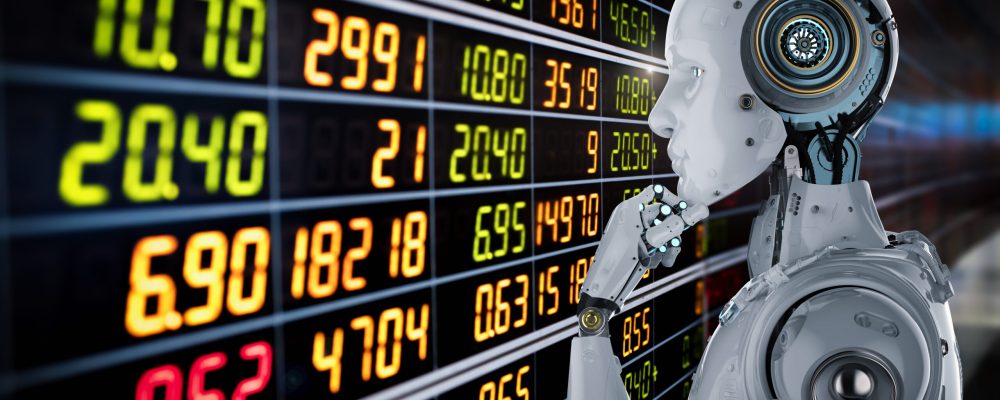In the dynamic landscape of financial markets, a profound transformation is underway, marked by the confluence of machines and markets. This evolution, often encapsulated in the term “algorithmic trading,” represents a paradigm shift in how financial transactions are executed. As we delve into this intersection where machines meet markets, we unravel the intricacies, implications, and innovations that define this revolutionary era.

THE ART AND SCIENCE OF ALGORITHMIC TRADING
Algorithmic trading is the art and science of leveraging sophisticated algorithms to execute financial transactions at speeds and frequencies impossible for human traders to match. It involves the use of computer programs to analyze vast datasets, identify market patterns, and execute trades with split-second precision. The goal is not only to automate trading processes but also to optimize strategies, enhance liquidity, and mitigate risks in real-time.
SPEED AS THE CURRENCY OF MODERN TRADING
At the heart of algorithmic trading lies the element of speed – a commodity that can make or break a trade. High-frequency trading (HFT), a subset of algorithmic trading, thrives on executing a large number of orders at ultra-fast speeds. Milliseconds can make a difference, and the race to reduce latency has led to the establishment of trading infrastructures strategically located near exchange servers to minimize execution times.
MARKET MAKING: CREATING LIQUIDITY DYNAMICS
One of the primary roles of algorithmic trading is market making, where algorithms continuously place buy and sell orders to provide liquidity to the market. By doing so, these algorithms facilitate smoother and more efficient trading, narrowing bid-ask spreads and reducing overall market volatility. Market makers play a crucial role in maintaining a healthy and liquid trading environment.
SMART ORDER ROUTING: NAVIGATING MULTIPLE MARKETS
In the complex landscape of modern financial markets, algorithmic trading systems often engage in smart order routing. This involves dynamically selecting the optimal execution venue, whether it’s a traditional exchange, alternative trading system (ATS), or dark pool. The goal is to achieve the best possible execution by navigating multiple markets and leveraging their unique characteristics.
ARBITRAGE STRATEGIES: CAPITALIZING ON PRICE DISCREPANCIES
Algorithmic trading excels in capitalizing on market inefficiencies, and one notable strategy is arbitrage. Whether it’s spatial arbitrage, temporal arbitrage, or statistical arbitrage, algorithms are designed to detect price discrepancies between different markets, assets, or timeframes. By exploiting these differences, algorithmic traders seek to profit from market inefficiencies before equilibrium is restored.
TECHNICAL INDICATORS AND MACHINE LEARNING: PREDICTIVE TRADING
The integration of technical indicators and machine learning algorithms has elevated the predictive capabilities of algorithmic trading systems. These algorithms analyze historical market data, identify patterns, and use predictive models to anticipate future price movements. The ability to adapt to changing market conditions and continuously learn from new data sets enhances the effectiveness of algorithmic trading strategies.
REGULATORY CHALLENGES: BALANCING INNOVATION AND OVERSIGHT
The rise of algorithmic trading has prompted regulatory bodies to grapple with the challenges posed by this rapidly evolving landscape. Issues such as market manipulation, algorithmic glitches, and the potential for systemic risks have prompted the establishment of regulatory frameworks to ensure fair and transparent markets. Striking a balance between fostering innovation and maintaining regulatory oversight remains a complex task in this dynamic space.
THE HUMAN ELEMENT: STRATEGIC DESIGN AND MONITORING
While algorithms execute trades at lightning speed, the human element remains integral to the design and monitoring of algorithmic trading strategies. Traders, quantitative analysts, and developers collaborate to design algorithms that align with the overarching trading objectives. Ongoing monitoring is crucial to ensure that algorithms operate as intended and to intervene in case of unforeseen market conditions.
EVOLUTION OF ALGORITHMIC TRADING: CRYPTOCURRENCIES AND BEYOND
The evolution of algorithmic trading extends beyond traditional financial markets, encompassing emerging sectors such as cryptocurrencies. In the crypto space, algorithmic trading plays a pivotal role in navigating the unique dynamics of decentralized and highly volatile markets. As technology continues to advance, algorithmic trading is poised to explore new frontiers, adapting to evolving financial instruments and global market trends.
ETHICAL CONSIDERATIONS: TRANSPARENCY AND ACCOUNTABILITY
As machines increasingly influence market dynamics, ethical considerations come to the forefront. Ensuring transparency in algorithmic trading strategies and holding market participants accountable for their actions are critical elements in maintaining trust and integrity in financial markets. Striking a balance between technological innovation and ethical responsibility remains an ongoing challenge in the era where machines meet markets.
THE FUTURE: INNOVATION AND HUMAN-ALGORITHM PARTNERSHIPS
The future of algorithmic trading holds promises of continued innovation and the exploration of novel technologies. While algorithms are becoming more sophisticated, the role of human expertise remains irreplaceable. The synergy between human intuition, strategic thinking, and machine-driven execution is likely to define the next phase of evolution in the landscape where machines meet markets.
CONCLUSION: NAVIGATING THE DIGITAL FRONTIER
In concluding our exploration of algorithmic trading, we find ourselves at the intersection of a digital frontier where machines seamlessly interact with markets. This transformative era introduces unprecedented speed, efficiency, and complexity to financial transactions. As algorithms continue to evolve, their impact on global markets prompts us to navigate this frontier with a blend of technological acumen, regulatory foresight, and ethical considerations, ensuring that the convergence of machines and markets propels us towards a more resilient and transparent financial future.